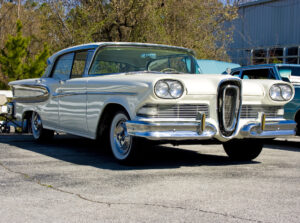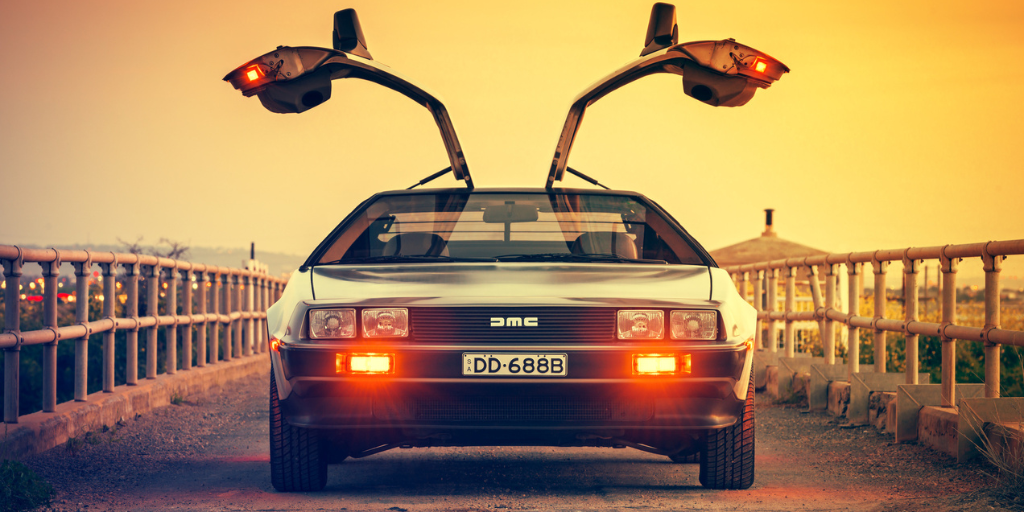While the spotlight often shines on innovation and success in the automotive industry, failures give equal, if not more, important lessons. The feats of electric vehicle (EV) giant Tesla and impending autonomous driving technologies often cloud preceding missteps.
However, past failures—ranging from poor design choices to misdirected marketing plans—offer invaluable lessons. Various cars missed their targets for different reasons, negatively impacting the respective car manufacturers while contributing to lessons about what to avoid.
DeLorean DMC-12
The DeLorean DMC-12, although famous for its role in the Back to the Future films, was a commercial fiasco. Launched in 1981, the chrome-plated sports car promised modernism but fell short. High performance was expected, but it failed to deliver. A burdensome price tag paired with disappointing speed and agility crippled its market potential.
Production ended abruptly after only 9,000 units were made. This happened just a year post-launch when bankruptcy loomed over the DeLorean Motor Company. Today, a mere 6,000 of these vehicles still exist.
The reasons behind its downfall are multifaceted. From unreliable build quality to subpar on-road performance, the deck was stacked against the DeLorean. Additionally, the company’s reputation was sullied when founder John DeLorean faced drug trafficking charges. His subsequent acquittal, due to a successful entrapment defense, failed to revive the company’s tarnished image. The legacy of the DMC-12 serves as a potent reminder of the impact that marketing and reputational damage can have on product success.
Edsel

1958 Ford Edsel
In the late 1950s, Ford Motor Company took a daring venture with the Edsel. This model, marketed as a pioneering endeavor, had taken a decade and a whopping $250 million to develop. However, the Edsel’s release coincided with a changing automotive industry and a recession, all of which the team had overlooked.
The Edsel was unfortunate to hit the market during an unforeseen boom in the compact car sector. Caught in the perfect storm, the Edsel struggled to attract consumers, marred by strategic oversights and a series of design gaffes. It quickly became a poster child for commercial failure.
By 1960, Ford conceded defeat and discontinued the Edsel line. While it might be seen as a failure, the Edsel’s story highlights the potential risks that even industry titans can face when misjudging market trends. The story of the Edsel serves as a stark reminder that understanding consumer demand and market timing is vital for a product’s success.
Pontiac Aztek
The Pontiac Aztek, launched in 2000, is infamous for being one of the most significant design disasters in the automotive industry. This vehicle, intended to be a novelty in the crossover SUV segment, deviated much from the conventional approach with its avant-garde design. However, this radical break from the norm backfired.
Public reaction to the Aztek’s bold aesthetics was one of widespread critique. The unconventional design failed to win over customers, cementing the model’s place in the roster of poorly received vehicles. A stunt involving the head marketing executive engaging with paid actors to hype the product did little to boost its appeal.
Despite attempts to incite enthusiasm, the Aztek managed to pull in a meager 27,000 units in sales each year. The Aztek’s tale underscores the critical role that aesthetics can play in a vehicle’s commercial viability. It remains a stark example of how unconventional design strategy can lead to irreversible consequences.
Yugo GV
When the Yugo GV, a vehicle hailing from Yugoslavia, entered the U.S. market in the late 1980s, it promised affordability without compromising on quality. The car’s low price tag of just $4400 was seen as an attractive proposition for cost-conscious consumers. However, the reality fell far short of these claims.
The Yugo quickly gained a reputation for its poor build quality, unreliability, and mediocre driving experience, mimicking its low price point. Hidden costs associated with shipping the vehicles and the high volume of warranty claims further undermined the model’s competitiveness.
Despite an initial sales peak of 48,000 units in 1987, the American love affair with the Yugo was short-lived. By 1992, the brand had exited the U.S. market, leaving a lasting mark as one of the worst cars ever sold in America. The Yugo GV remains a stark testament to the age-old adage: You get what you pay for.
Ford Pinto
The 1970s saw the Ford Pinto become infamous for a reason far removed from typical vehicle malfunctions. It developed a notorious reputation for catching fire in rear-end collisions. Its perilous flaw became a haunting exemplification of compromised safety for enhanced profits.
Subsequent court proceedings revealed shocking internal memos from Ford. The company had conducted a cold-hearted cost-benefit analysis, deeming it more economical to settle potential lawsuits than to rectify the defect. This decision marked a dark epoch in Ford’s history, exposing the ethical crises faced when profit was prioritized over safety.
One lawsuit awarded the victims’ family over $3 million in damages, along with a punitive fine of $125 million. Although Ford managed to reduce the punitive amount to $3.5 million on appeal, the Pinto’s blemished legacy cemented its place as a grim reminder of the necessity to prioritize safety over savings.
Aptera Typ-1
In the mid-2000s, prior to Tesla’s groundbreaking electric Roadster, the Aptera Typ-1 had raised significant interest. It was presented as a futuristic, three-wheeled electric vehicle with a focus on maximum efficiency. Yet, despite its potential, the Aptera never progressed beyond the prototype stage.
The company faced financial woes, including an unsuccessful application to the Department of Energy’s Advanced Technology Vehicles loan program. These fiscal struggles prohibited the Typ-1’s transition to mass production, serving as a stark reminder of the industry’s harsh realities.
Despite the trials and tribulations, the company hasn’t given up. Aptera is currently attempting a comeback, seeking investors for their solar-powered electric vehicles. The saga of the Aptera Typ-1 teaches us that even innovative and green concepts can stumble in the automotive market, underlining the importance of sound financial planning in industry ventures.
History has demonstrated that insightful lessons can be learned from both successes and failures in the automotive industry. Each of these cautionary tales—from the DeLorean DMC-12 to the Aptera Typ-1—underscores the importance of various strategies. Factors such as product design, timing, consumer needs, safety concerns, and robust financial planning all play a crucial role in a car’s success or failure. As the industry continues to evolve, these stories serve as guideposts, aiding manufacturers and enthusiasts alike in avoiding previous pitfalls and creating innovative, successful vehicles for the future.








